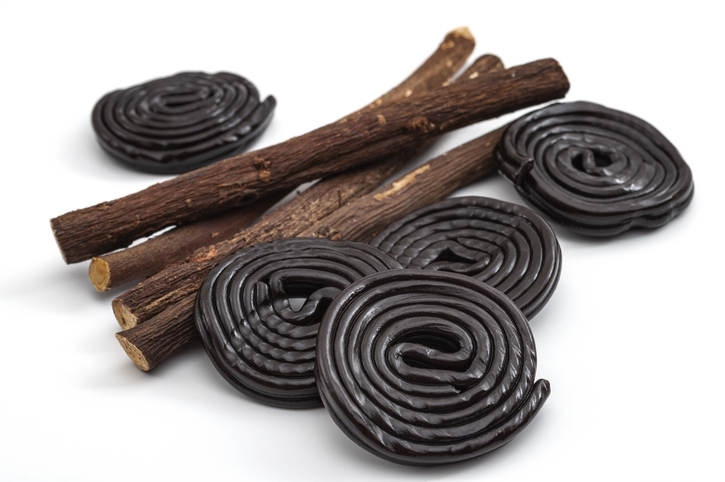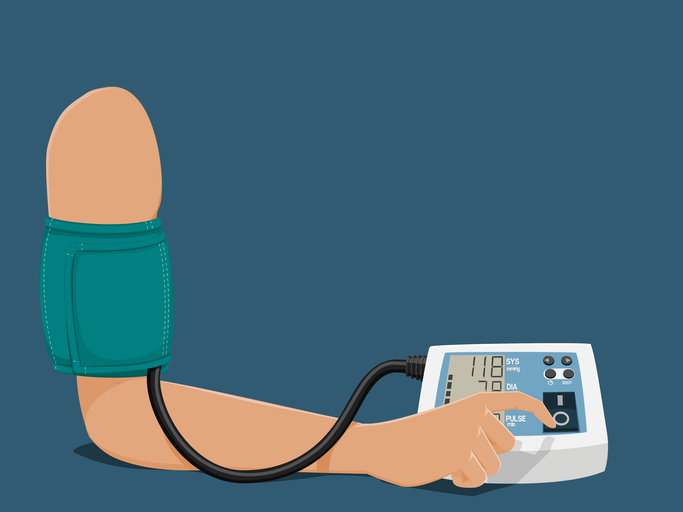Even Small Amounts of Licorice Can Raise Blood Pressure and Overwork Your Heart

By Joy Stephenson-Laws, J.D., Founder
Black licorice. Most people either love it or hate it. It’s definitely an acquired taste. I’m not a fan but I can’t help but notice all of the licorice root tea available in the coffee and tea aisle at the grocery store. It’s a caffeine-free tea, and I’m all about zero caffeine considering I am a slow caffeine metabolizer. Coffee and other caffeinated beverages cause my blood pressure to elevate. It turns out, however, that even small amounts of licorice may cause blood pressure to rise.
(I’ve written about how larger amounts of licorice can elevate blood pressure, however, a small amount is not as widely known. This is definitely important information if you consume licorice).
Researchers at Linköping University in Sweden recently conducted a study where they found evidence showing that consuming a small amount of licorice causes a blood pressure spike.

In this particular study, the licorice weighed 3.3 grams and contained 100 grams of glycyrrhizic acid (also called glycyrrhizin). This acid is primarily the reason why consuming licorice may cause a rise in blood pressure. Glycyrrhizic acid is what gives licorice its sweet taste, but it is also a compound that can cause potassium levels to drop.
‘Potassium relaxes the walls of the blood vessels, lowering blood pressure and protecting against muscle cramping. A number of studies have shown an association between low potassium intake and increased blood pressure and higher risk of stroke,” according to Harvard Health Publishing.
The FDA states that for those who are 40 years of age or older consuming two ounces of black licorice per day for at least two weeks could put them in the hospital with arrhythmia (irregular heartbeat).
What I think is particularly noteworthy about the study conducted in Sweden is that the participants were young (between the ages of 18 to 30), healthy people. So, the fact that small amounts of licorice affected their blood pressure really puts into perspective just how potentially dangerous licorice can be for people who are older and/or have existing health issues.
Those who participated in the study were instructed to consume licorice or a control product that did not contain any licorice at all. Again, the licorice weighed 3.3 grams and contained 100 grams of glycyrrhizic acid. (Just one ounce is equal to about 28 grams). According to this ScienceDaily report that discusses the study, 100 grams of glycyrrhizic acid is generally a safe amount on a daily basis for most people. For a two week period, study participants were either consuming the licorice or the control product. They were then instructed to consume the opposite of what they consumed for two weeks. They were asked to check their blood pressure at home every day.
- Once Again, We See Why Monitoring Blood Pressure At Home Can Be Life-Saving
- If You Are Older, Home Blood Pressure Checks Can Be Life-Saving
- Two New Reasons to Check Your Blood Pressure!
The researchers measured the participants hormones, salt balance and heart workload. The results revealed the blood pressure increased (by an average of 3.1 mmHg) when the participants ate the licorice.
(To understand blood pressure readings, check out Healthy Blood Pressure Range for Women May Be Lower Than For Men)

In those who ate licorice, the researchers also noticed an imbalance in certain hormones that regulate fluid balance. Furthermore, in those that appeared to be the most sensitive to the effects of licorice they experienced “elevated levels of a protein that the heart secretes more of when it needs to work harder to pump around the blood in the body, N-terminal pro-brain natriuretic peptide (NT-proBNP),” according to ScienceDaily.
“This suggests increased fluid volume and heart workload in the individuals most sensitive to the effects of liquorice.”
Should I completely avoid licorice?This is a personal choice, but perhaps I should know exactly how much glycyrrhizic acid I am consuming. This, unfortunately, is not always easy information to find.
“This variation [amount of glycyrrhizic acid] may depend on factors such as origin, storage conditions and liquorice root species. In addition, the amount of glycyrrhizic acid is not indicated on many products,” (ScienceDaily).
It may be very difficult to determine how much glycyrrhizic acid is in a licorice supplement or tea. As always, speak with your doctor or a competent healthcare professional on what the best option is for you. You can also be proactive by measuring your blood pressure at home when you consume a licorice product. I do want to reiterate that the study discussed involved people between the ages of 18 to 30. Although they were all very young, consuming a small amount of licorice caused strain on the heart and elevated blood pressure. If you really want to consume a licorice tea, take a licorice supplement or can’t let go of your licorice candy habit, I really encourage you to weigh the pros and cons and see if it is worth it. This especially holds true if you are 40 or older. Again, speak with your doctor.
Do everything you can to maintain a healthy blood pressure.
One of the reasons why millions of Americans currently have high blood pressure is a diet rich in unhealthy fats, sugar and processed foods. The good news is diet is something you can improve. Along with eating junk foods and sweets in moderation, make sure you are getting an adequate intake of these 7 nutrients that may help fight hypertension. And as always, take a comprehensive nutrient test to ensure you have the right balance of nutrients, like magnesium and potassium. These are examples of nutrients which directly affect your ability to maintain a healthy blood pressure.
Enjoy your healthy life!
Disclaimer: This article is not intended to provide medical advice. Please consult with your doctor or another competent healthcare practitioner to get specific medical advice for your situation.
The pH professional health care team includes recognized experts from a variety of health care and related disciplines, including physicians, attorneys, nutritionists, nurses, and certified fitness instructors. This team also includes the members of the pH Medical Advisory Board, which constantly monitors all pH programs, products, and services. To learn more about the pH Medical Advisory Board, click here.







